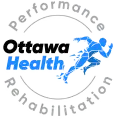Have you ever felt overwhelmed standing in the grocery aisle, flipping over a package to check the nutrition facts — but not knowing exactly what to look for? You’re not alone.
Nutrition labels can be tricky. Food companies often highlight buzzwords like “natural,” “gluten-free,” or “low fat” on the front of the packaging — while hiding important details in the fine print. Learning how to decode a nutrition label empowers you to make better, smarter choices for yourself and your family.
Here’s a simple, step-by-step guide to what you should look for — and why it matters.
1. Start with the Serving Size (The Sneakiest Part!)
Always — always — start by checking the serving size at the top of the Nutrition Facts panel.
Why?
Because all the numbers listed (calories, fats, sugars, etc.) are based on that specific amount. And often, it’s much smaller than what you’d actually eat.
Example:
A small bag of chips might list 150 calories — but the serving size is only 15 chips, and the bag actually contains 3 servings.
Tip:
- If you eat double or triple the serving size (which is easy with snack foods!), you’re also doubling or tripling the calories, fat, sugar, and sodium.
Bottom Line:
Serving size tells you if the rest of the label is even relevant to how you actually eat.
2. Calories: How Much Energy Are You Really Getting?
Calories are simply a measure of energy. It’s not about “good” or “bad” foods — it’s about understanding how much energy you’re taking in.
What to look for:
- Reasonable calories for your personal goals (weight loss, maintenance, energy).
- Watch out for deceptively “low-calorie” foods that are high in sugar, fat, or sodium.
Pro Tip:
Don’t obsess over calories alone. It’s more important to focus on nutrient density — foods that deliver vitamins, minerals, and fibre along with their calories.
3. Ingredients List: The Real Story Behind the Numbers
The ingredients list often reveals far more than the calorie count does.
How to read it:
- Ingredients are listed in order of quantity — meaning the first ingredient is what the food contains the most of.
- Shorter, simpler ingredient lists usually mean less processing.
Red flags to avoid:
- Added sugars (more on this below)
- Hydrogenated or partially hydrogenated oils (trans fats)
- Artificial preservatives, colours, and flavours
Good signs to look for:
- Whole food ingredients like real fruit, nuts and seeds
- Natural preservatives like vitamin C (ascorbic acid)
4. Sugar: The Hidden Danger
Sugar isn’t just in desserts — it hides in everything from salad dressings to yogurt.
What matters:
- Total Sugars: Includes both natural (like fruit) and added sugars.
- Added Sugars: Sugars that have been added during processing. This is what you want to minimize.
Aim for:
- Products with less than 5 grams of added sugar per serving, whenever possible.
Watch for hidden names:
- Corn syrup, brown rice syrup, maltose, dextrose, cane juice, fruit concentrate — these all mean added sugar.
5. Fibre: Your Secret Weapon for Health
Fibre is one of the most underrated nutrients — and most people don’t get enough!
Why fibre matters:
- Supports healthy digestion
- Keeps you feeling full longer
- Helps control blood sugar levels
- Supports heart health
Look for:
- At least 3 grams of fibre per serving for snacks and cereals.
- Whole grains, legumes, fruits, and vegetables as primary ingredients.
Avoid:
- “Multigrain” products that aren’t really whole grain. Always check the ingredients!
6. Fats: Good vs. Bad
Fat is not your enemy — but quality matters.
Good fats to seek out:
- Unsaturated fats from foods like olive oil, avocados, nuts, seeds, and fish
- Omega-3 fatty acids (support heart and brain health)
Fats to minimize or avoid:
- Trans fats (often labeled as “partially hydrogenated oils”)
- High levels of saturated fat (especially from heavily processed foods)
Quick Tip:
If a product has 0g trans fat but lists “partially hydrogenated oil” in the ingredients, that’s a red flag! (Companies are allowed to round down if a serving has less than 0.5g.)
7. Sodium: More Than Just Salt
Sodium is essential — but too much can cause high blood pressure, water retention, and strain on your heart.
Where it hides:
- Soups, sauces, frozen meals, snacks, breads
Aim for:
- Less than 140 mg of sodium per serving for a “low sodium” option.
- No more than 2,300 mg per day (and even lower if you have hypertension or kidney issues).
8. Bonus Tip: Don’t Fall for Health Haloes
Front-of-package claims like “high protein,” “low fat,” “gluten-free,” or “organic” can trick you into thinking a food is automatically healthy. Always turn the package over and check the label and ingredients for the full story.
Quick Summary: Your Label-Reading Cheat Sheet
When in doubt, ask yourself:
✅ Is the ingredient list short and recognizable?
✅ Are there minimal added sugars and artificial additives?
✅ Does it offer fiber, protein, and healthy fats?
✅ Are sodium and unhealthy fats kept low?
✅ Is the serving size realistic for how I actually eat?
If the answers are mostly “yes” — you’re holding a healthier choice.
Ready to Take Your Nutrition Knowledge Even Further?
Learning how to read labels is a huge first step — but if you want customized advice for your personal goals, working with a Registered Holistic Nutritionist can make all the difference.
At Ottawa Health: Performance and Rehabilitation, we help clients:
- Navigate grocery stores confidently
- Choose better foods without feeling overwhelmed
- Build meal plans that work in real life — not just on paper
Ready to take control of your health and nutrition?
Book your assessment today — and let’s make healthy eating simple, realistic, and rewarding!




